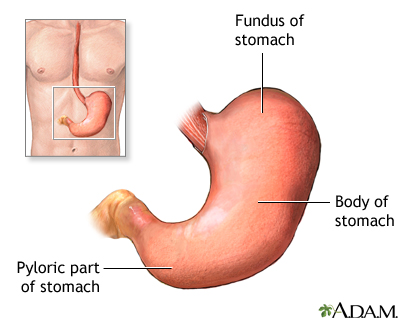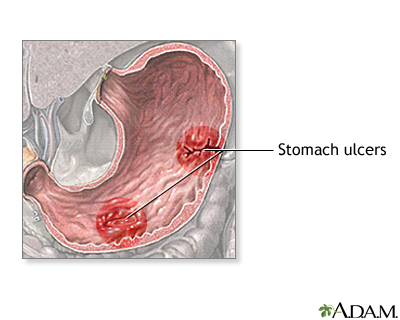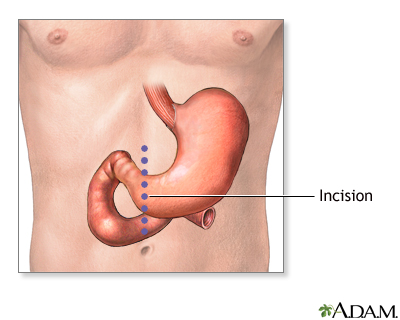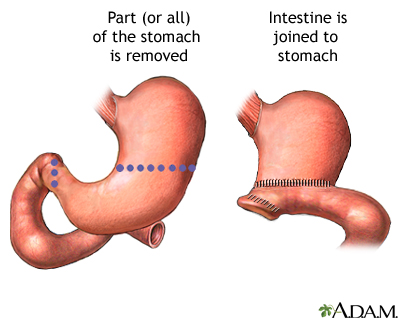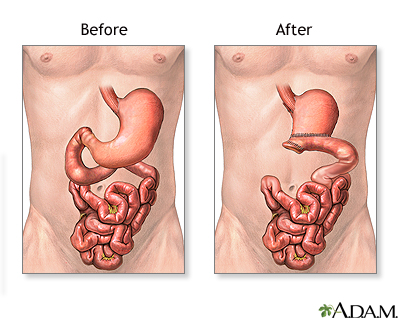Gastrectomy
| Normal anatomy |
|
The stomach connects the esophagus to the small intestine, and functions to digest food into small particles, which pass into the small intestine for additional digestion and absorption into the bloodstream. |
| Indications |
|
In stomach problems, such as ulcers or cancer, partial or total removal of the stomach may be indicated. |
| Incision |
| An incision is made in the skin over the pyloric region of the stomach. |
| Procedure |
|
The diseased portion of the stomach is removed. The small intestine is attached to the remainder of the stomach to preserve the function of the digestive tract. |
| Aftercare |
|
The patient will be on nasogastric tube suction to keep the stomach empty and at rest after surgery. After several days and when the stomach starts to function normally again the tube will be removed and the patient will begin ingesting clear liquids and gradually progress to a full and normal diet. |

|
Review Date:
5/21/2012
Reviewed By:
Harvey Simon, MD, Editor-in-Chief, Associate Professor of Medicine, Harvard Medical School; Physician, Massachusetts General Hospital. |
The information provided herein should not be used during any medical emergency or for the diagnosis or treatment of any medical condition. A licensed medical professional should be consulted for diagnosis and treatment of any and all medical conditions. Links to other sites are provided for information only -- they do not constitute endorsements of those other sites. © 1997-
A.D.A.M., Inc. Any duplication or distribution of the information contained herein is strictly prohibited.



